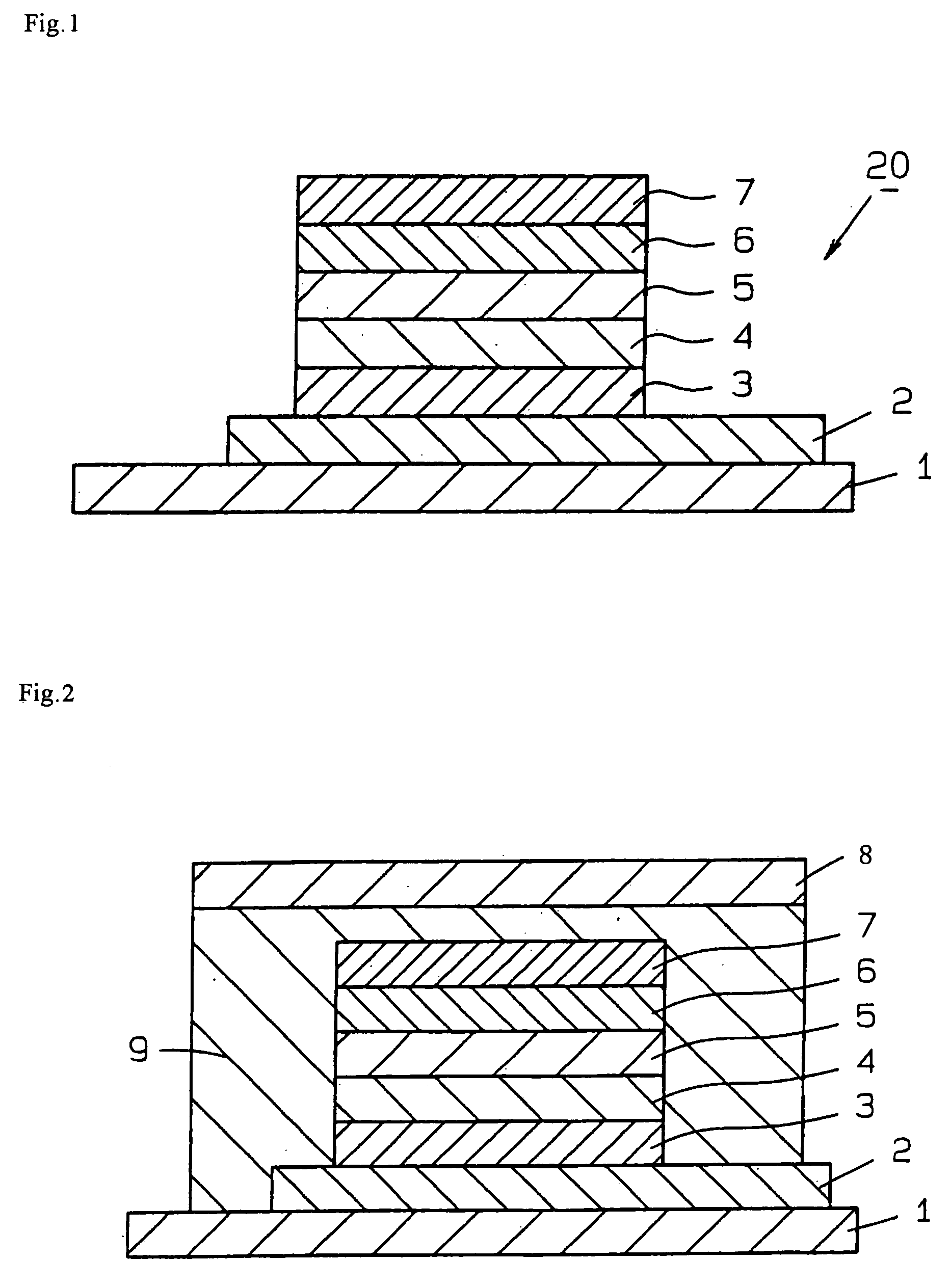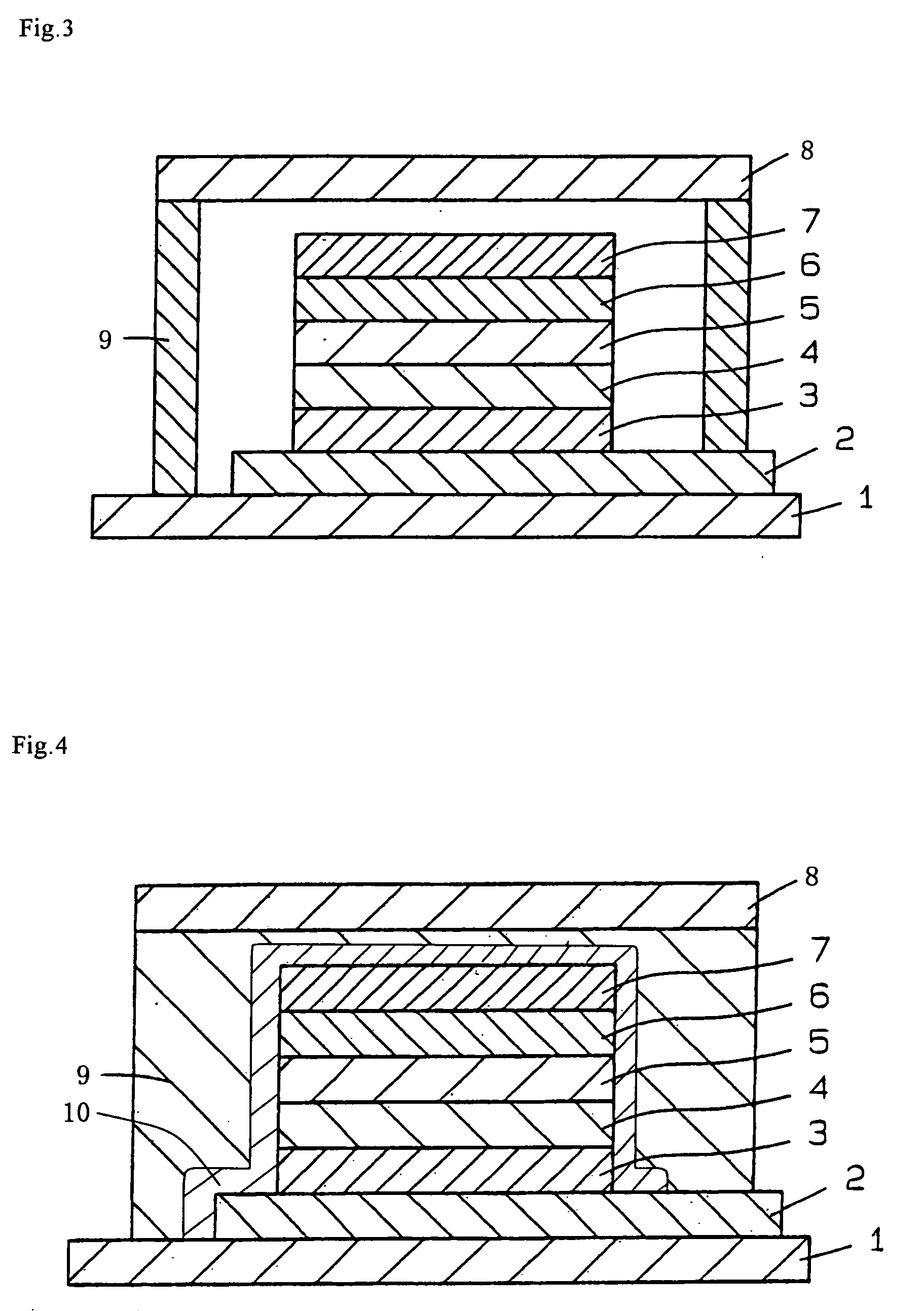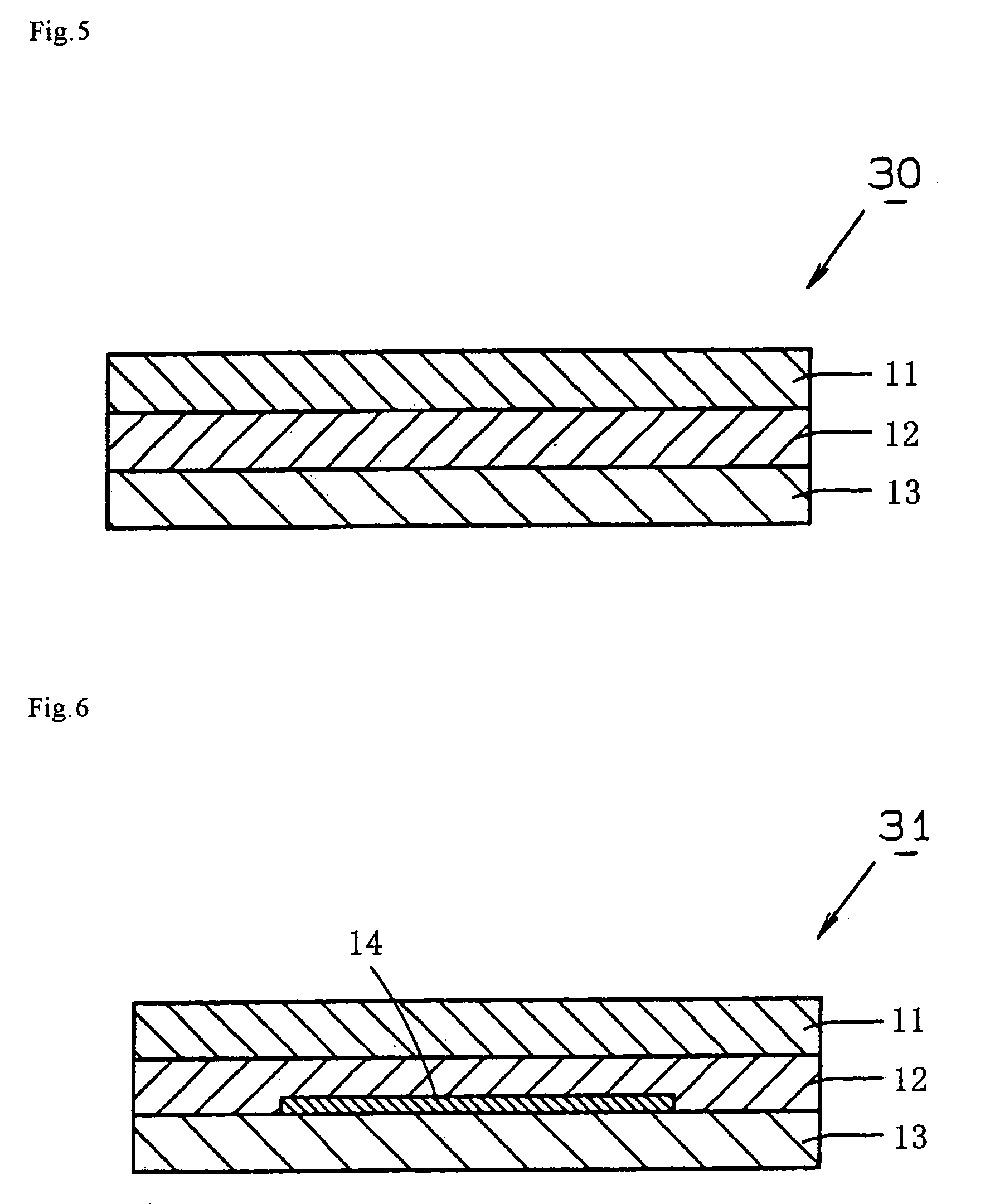Adhesive for sealing organic electroluminescent element and use thereof
a technology of electroluminescent elements and adhesives, applied in the field of adhesives, can solve the problems of shortening the life affecting the luminous property of organic el devices,
- Summary
- Abstract
- Description
- Claims
- Application Information
AI Technical Summary
Benefits of technology
Problems solved by technology
Method used
Image
Examples
examples 10
(1) Fabrication of Organic EL Device
[0127] A substance, which was fabricated by forming a film of ITO electrode in a thickness 100 nm on a glass substrate with a size of 25 mm×25 mm×0.7 mm, was used as a transparent supporting substrate. After this substrate was ultrasonically cleaned for 15 minutes with acetone and ultrasonically cleaned for 15 minutes with an alkaline aqueous solution, it was ultrasonically cleaned for 15 minutes with isopropyl alcohol, and further cleaned for 10 minutes with boiled isopropyl alcohol, and further treated at the last minute with UV-Ozone Cleaner (“NL-UV 253”, manufactured by Nippon Laser & Electronics LAB.). Next, the above transparent supporting substrate was secured to a substrate holder of a commercially available vacuum evaporation apparatus (ULVAC, Inc.), and 200 mg of N,N′-di(1-naphthyl)-N,N′-diphenylbenzidine (α-NPD) was put in a biscuit crucible and 200 mg of tris(8-hydroxyquinoline) aluminum (Alq3) was put in another biscuit crucible, an...
examples 11
[0134] In an recovery flask (50 ml), a molecular sieve was put, and under absolutely dry condition, a mixture of 10 parts by weight of a sulfonium salt type photo cationic polymerization initiator (“CD-1012” produced by Sartomer Company Inc.), 1 part by weight of carbodiimide compound (“CARBODILITE oily resin modifier V-05” produced by Nisshinbo Industries, Inc.) and 1 part by weight of tolylene diisocyanate were stirred for 5 hours in 100 parts by weight of toluene while being refluxed and reacted, and then a reaction product was dried under a reduced pressure and purified with a column chromatography to obtain a highly polymerized photo cationic polymerization initiator.
[0135] Next, 1 part by weight of the obtained photo cationic polymerization initiator, 100 parts by weight of bisphenol A glycidyl ether (“EP828” produced by Japan Epoxy Resins Co., Ltd.) and 20 parts by weight of talc were adequately stirred by a planetary mixer and then deaerated under a reduced pressure to obta...
example 12
(1) Fabrication of thin Film Structure
[0138] A substance, which was fabricated by forming a film of ITO electrode in a thickness 100 nm on a glass substrate with a size of 25 mm×25 mm×0.7 mm, was used as a transparent supporting substrate. The transparent supporting substrates was ultrasonically cleaned for 15 minutes with acetone, ultrasonically cleaned for 15 minutes with an alkaline aqueous solution, ultrasonically cleaned for 15 minutes with ion-exchanged water, ultrasonically cleaned for 15 minutes with isopropyl alcohol, and ultrasonically cleaned for 10 minutes with boiled isopropyl alcohol, and then treated at the last minute with UV-Ozone Cleaner (“NL-UV253”, manufactured by Nippon Laser & Electronics LAB.).
[0139] Next, this cleaned transparent supporting substrate was secured to a substrate holder of a vacuum evaporation apparatus (ULVAC, Inc.), and 200 mg of N,N′-di(1-naphthyl)-N,N′-diphenylbenzidine (α-NPD) was put in a biscuit crucible and 200 mg of tris(8-hydroxyqui...
PUM
| Property | Measurement | Unit |
|---|---|---|
| thickness | aaaaa | aaaaa |
| thickness | aaaaa | aaaaa |
| thickness | aaaaa | aaaaa |
Abstract
Description
Claims
Application Information
 Login to View More
Login to View More - R&D
- Intellectual Property
- Life Sciences
- Materials
- Tech Scout
- Unparalleled Data Quality
- Higher Quality Content
- 60% Fewer Hallucinations
Browse by: Latest US Patents, China's latest patents, Technical Efficacy Thesaurus, Application Domain, Technology Topic, Popular Technical Reports.
© 2025 PatSnap. All rights reserved.Legal|Privacy policy|Modern Slavery Act Transparency Statement|Sitemap|About US| Contact US: help@patsnap.com



